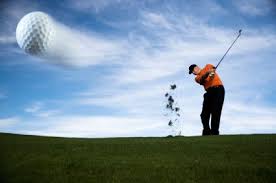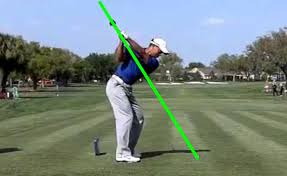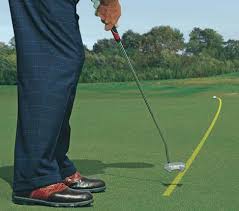The only difference between you and an Iron Byron, the golf ball testing robot, is that you have emotions and adrenaline to change the consistency of your swing. You know what you want to accomplish with every swing but your mental state, physical condition and levels of adrenaline will affect every swing that you make.
Bobby Jones, the founder of The Masters at Augusta National gave us the quote that was plaguing Sergio Garcia: “Competitive golf is played mainly on a five-and-a-half-inch course… the space between your ears.” Sergio’s win at the Masters tells us that he finally mastered his head and his adrenaline.

Sergio Garcia has finally found confidence with the new love in his life. Try CALM and RELAXED when you golf and let it all out when you win.
YOUR GOAL IS CONSISTENCY: We all hit great shots for a percent of our hits using every club. Your goal is to repeat that swing with each club. So why is it so difficult to repeat that swing? You have to swing with the same emotional tempo. When you are excited or your adrenaline is pumping, you are a different person than the person who is confident, relaxed and just trying to layup a perfect shot.
How often do you say to yourself “Just swing easy”? Then you step up to the ball and try to knock the crap out of that ball. What were you thinking?
I recently played in a tournament where I stepped up to the first tee and felt like it was the tee-off at the Masters. Adrenaline? You bet! I topped the ball 100 yards down the fairway. After this embarrassing start I proceeded to swing harder to catch up to my competitor on my next shot. Too bad, same result.
SOLUTION: RELAX, PERFECT PRACTICE SWING and PERFECT HIT
1/ When you make a poor shot, accept the fact that you may bogie the hole. You need to change your goal for that hole as if you are playing against yourself to avoid a double bogie.
2/ If your shot puts you in a poor position behind trees or in the rough, accept the fact that you may bogie the hole. Select the right club to get your ball back in play on the fairway. Avoid the blow-up hole.
3/ Whether you are on the tee at the first hole or hitting from a poor location or you are headed for a bogie, you need to calm your mind. Relax your body. Accept the fact that your next shot is the only shot that matters.
4/ As you prepare to setup for your next shot mentally say the words “calm and relaxed”, drop your shoulders and make the practice swing with the exact tempo that you plan for your hit.
5/ In your practice swing, relax your arms to ensure that your wrists are loose to allow your club enough time to reach the perfect lag position in your backswing (as your weight shift from your trailing leg to your leading leg). Hear the whooshing sound when you execute the release of your wrists.
6/ You know how to swing from the inside to up the line. Once more, mentally say “calm and relaxed” and duplicate your perfect practice swing as you hit the perfect shot.
RELAX, PERFECT PRACTICE SWING for the identical PERFECT HIT
You can’t be successful in golf unless your mind is focused on the perfect swing and your adrenaline level is low. Practice with your GOLFSTR+ at the driving range before you play to get the feeling of the perfect release [without killing the ball]. Learn to lag with your wrists in your backswing so that you can create a whooshing sound as you whip the club head through the ball. Buy a GOLFSTR+ TODAY for 6 swing fixes at www.golfstr.com











